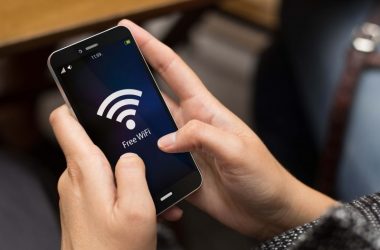Apple yesterday patched 46 security vulnerabilities, half of them in the Safari browser and its WebKit rendering engine, for the iPhone and iPod Touch as it released iPhone OS 3.0.
The company fixed nearly four times the number of flaws Wednesday than when it last patched the iPhone software. In November 2008, Apple issued a security update alongside iPhone 2.2 that plugged 12 holes.
Almost half of the vulnerabilities — 21 all told — were tagged with Apple's usual “arbitrary code execution” phrase, lingo that essentially means that the bug is critical and could be used to compromise the device. Unlike other major software makers, such as rival operating system developer Microsoft and database giant Oracle, Apple doesn't rank vulnerabilities using a scoring system.
Not surprisingly, 50% of the patches apply to bugs in Safari, the iPhone and iPod Touch's browser, or WebKit, the open-source browser engine that Apple uses as Safari's foundation. Safari and WebKit have been the focus of most research into iPhone hacks. The first reported iPhone bug, for example, was a Safari flaw found by a trio of researchers, including Charlie Miller, formerly with the National Security Agency, in July 2007.
Twenty-one of the 23 browser-related bugs that Apple patched yesterday were in WebKit code; the remaining two were in Safari itself. Among the former were multiple cross-site scripting bugs that identity thieves could use for phishing attacks and malware makers to inject rogue attack code, including JavaScript, to hijack the browser and gain access to information on the iPhone or iPod Touch.
One of the WebKit vulnerabilities stands out because of the attention it received in March, when a German college student, who gave only his first name, Nils, walked away with a $5,000 cash prize for hacking Safari at the “Pwn2Own” challenge. Nils used a bug in WebKit's handling of SVGList objects to crack Safari.
Nils' WebKit bug was first patched in a massive 67-flaw fix issued in mid-May for Mac OS X; today Apple patched the same vulnerability in the iPhone's operating system.
Apple addressed eight bugs in CoreGraphics, five in the XML library, two in the iPhone's e-mail client, and other flaws in ImageIO, IPSec and Unicode components of the operating system. The update also patches a vulnerability in how the iPhone connects to Microsoft Exchange servers, which could be exploited to steal data or gain access to the iPhone's Exchange account.
iPhone 3.0, which contains the 46 patches, can be downloaded by connecting the iPhone or iPod Touch to its sync PC or Mac, running iTunes, clicking on the device in the listing on the left and then clicking the “Check for Update” button.
patched 46 security vulnerabilities, half of them in the Safari browser and its WebKit rendering engine, for the iPhone and iPod Touch as it released iPhone OS 3.0.
The company fixed nearly four times the number of flaws Wednesday than when it last patched the iPhone software. In November 2008, Apple issued a security update alongside iPhone 2.2 that plugged 12 holes.
Almost half of the vulnerabilities — 21 all told — were tagged with Apple's usual “arbitrary code execution” phrase, lingo that essentially means that the bug is critical and could be used to compromise the device. Unlike other major software makers, such as rival operating system developer Microsoft and database giant Oracle, Apple doesn't rank vulnerabilities using a scoring system.
Not surprisingly, 50% of the patches apply to bugs in Safari, the iPhone and iPod Touch's browser, or WebKit, the open-source browser engine that Apple uses as Safari's foundation. Safari and WebKit have been the focus of most research into iPhone hacks. The first reported iPhone bug, for example, was a Safari flaw found by a trio of researchers, including Charlie Miller, formerly with the National Security Agency, in July 2007.
Twenty-one of the 23 browser-related bugs that Apple patched yesterday were in WebKit code; the remaining two were in Safari itself. Among the former were multiple cross-site scripting bugs that identity thieves could use for phishing attacks and malware makers to inject rogue attack code, including JavaScript, to hijack the browser and gain access to information on the iPhone or iPod Touch.
One of the WebKit vulnerabilities stands out because of the attention it received in March, when a German college student, who gave only his first name, Nils, walked away with a $5,000 cash prize for hacking Safari at the “Pwn2Own” challenge. Nils used a bug in WebKit's handling of SVGList objects to crack Safari.
Nils' WebKit bug was first patched in a massive 67-flaw fix issued in mid-May for Mac OS X; today Apple patched the same vulnerability in the iPhone's operating system.
Apple addressed eight bugs in CoreGraphics, five in the XML library, two in the iPhone's e-mail client, and other flaws in ImageIO, IPSec and Unicode components of the operating system. The update also patches a vulnerability in how the iPhone connects to Microsoft Exchange servers, which could be exploited to steal data or gain access to the iPhone's Exchange account.
iPhone 3.0, which contains the 46 patches, can be downloaded by connecting the iPhone or iPod Touch to its sync PC or Mac, running iTunes, clicking on the device in the listing on the left and then clicking the “Check for Update” button.





